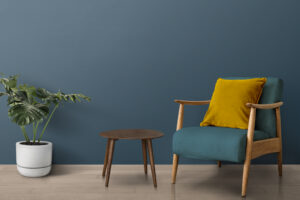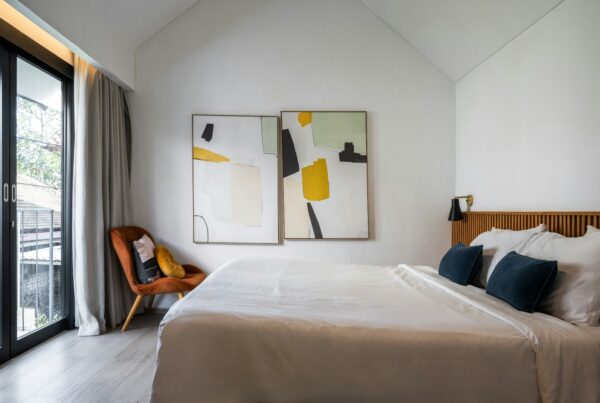
In the ever-evolving world of interior design and home decoration, staying abreast of the latest trends is key to creating spaces that are not only stylish but also reflective of personal tastes and contemporary aesthetics. As we move through 2024, several exciting trends have emerged that are reshaping how we approach decorating our living spaces.
1. Sustainable and Eco-Friendly Design
There is an increasing emphasis on sustainability within interior design. Homeowners and designers are opting for eco-friendly materials that minimize environmental impact while enhancing the aesthetic appeal of spaces. Materials such as reclaimed wood, recycled glass, natural fibers like bamboo and hemp, and low-VOC paints are becoming popular choices. Beyond materials, sustainable design also includes energy-efficient appliances, water-saving fixtures, and designs that promote passive heating and cooling strategies. Sustainability extends further into biophilic design principles, which integrate nature into indoor spaces to improve well-being and connection to the natural world.
2. Biophilic Design
Biophilic design continues to gain momentum as people seek to bring elements of nature into their homes. This design approach recognizes the innate human desire to connect with nature and incorporates natural elements such as indoor plants, natural light, water features, and natural materials like wood and stone. Biophilic design not only enhances the visual appeal of interiors but also contributes to improved air quality, reduced stress levels, and increased productivity. By creating environments that mimic natural settings, biophilic design promotes a sense of tranquility and well-being.
3. Minimalism with a Personal Touch
Minimalism remains a dominant trend in interior design, characterized by clean lines, uncluttered spaces, and a focus on essential elements. However, contemporary minimalism often incorporates personalized touches that reflect the homeowner’s personality and interests. This can include unique artwork, handmade ceramics, carefully curated collections, or bespoke furniture pieces. By combining simplicity with individuality, minimalist interiors achieve a harmonious balance between functionality and aesthetic appeal.
4. Bold Colors and Patterns
While minimalism thrives, there is also a notable trend towards using bold colors and patterns to make a statement within interiors. Vibrant hues such as emerald green, deep blues, and rich ochres are being embraced for accent walls, furniture pieces, and decorative accessories. Additionally, geometric patterns, abstract designs, and oversized floral prints are popular choices for adding visual interest and personality to living spaces. Bold colors and patterns create dynamic focal points within rooms, evoking energy and creativity while allowing homeowners to express their unique sense of style.
5. Multifunctional and Flexible Spaces
In response to changing lifestyles and needs, there is a growing demand for multifunctional spaces that can adapt to various activities throughout the day. Home offices that double as guest bedrooms, dining areas with integrated storage solutions, and modular furniture that can be rearranged are becoming increasingly popular. This trend towards flexibility and functionality encourages creative use of space while maintaining a sense of style and comfort. By incorporating adaptable designs and versatile furniture pieces, homeowners can optimize their living environments to suit diverse activities and preferences.
6. Mixing Old and New
Eclectic interiors that blend vintage or antique pieces with contemporary furniture and decor items are gaining traction in interior design. This approach allows homeowners to create unique and personalized spaces that tell a story of their tastes and experiences. By juxtaposing old and new elements, such as incorporating heirloom furniture, thrifted finds, or artisanal crafts alongside modern designs, eclectic interiors achieve a curated yet effortless aesthetic. This blending of styles and eras adds depth, character, and visual intrigue to living spaces, fostering a sense of warmth and nostalgia.
7. Smart Homes
The integration of technology into home design continues to evolve, with smart home systems becoming increasingly sophisticated and accessible. From voice-activated assistants and automated lighting to smart appliances and security systems, these technologies enhance convenience, efficiency, and security within the home. Smart home features allow homeowners to control various aspects of their living environment remotely, optimize energy usage, and create personalized experiences tailored to individual preferences. As technology continues to advance, smart homes are transforming the way we interact with and experience our living spaces, offering enhanced comfort and connectivity.
8. Creating Warm and Inviting Atmospheres
In contrast to minimalist aesthetics, there is a timeless appeal in creating warm and inviting spaces that prioritize comfort and relaxation. Soft textures such as plush rugs, velvet upholstery, and knit throws are used to add warmth and tactile comfort to interiors. Additionally, ambient lighting through strategically placed lamps, candles, and pendant lights helps to create intimate and inviting atmospheres in various rooms. By incorporating cozy elements and creating a welcoming ambiance, homeowners can cultivate spaces that promote relaxation, socialization, and overall well-being.
Conclusion
In conclusion, the latest trends in home decoration and interior design for 2024 reflect a harmonious blend of sustainability, personalization, functionality, and aesthetic innovation. Whether you gravitate towards minimalist design principles, embrace bold colors and patterns, or prefer the warmth of eclectic interiors, there are numerous ways to create spaces that resonate with your lifestyle and preferences. By incorporating these trends thoughtfully, homeowners can achieve environments that are not only stylish but also functional and conducive to well-being. As the design landscape continues to evolve, it is essential to remain open to exploration, experimentation, and inspiration in order to create homes that truly reflect individual personalities and tastes. By embracing current trends while incorporating personal touches, homeowners can create living spaces that are both timeless and uniquely their own.



